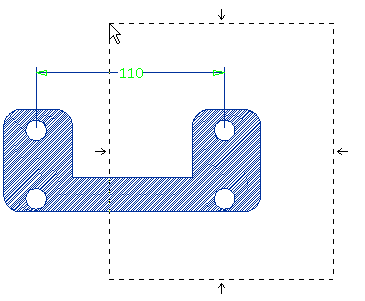
The set of handles is displayed (for further details on the handles, sse the description of the Multistretch Entities command).
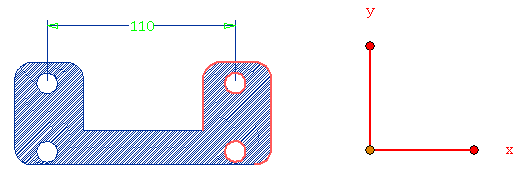
End selection by right-clicking and selecting Continue in the context menu. To change the selected entities, right-click on Entities, select Reset in the context menu and perform selection again.
| Default position of the origin By default, the position of the origin depends on the selected entities.
|
To define a different starting point, you can choose one of the following methods:
- Double-click on the handle and specify the new starting point
- Click on Handle Origin in the selection list to expand it, click on Start point and then specify the new starting point
- Click on Handle Origin in the selection list to expand it, right-click on Start point, select Reset in the context menu and then specify the new starting point.
In this example, we clicked on the origin handle and then specified the mid point of the central top line:
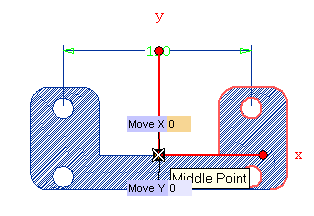
The X,Y and ZX and Y axes are initially parallel to the corresponding Work Planecoordinate axes. To modify the initial orientation of the axes, you can choose one of the following methods:
- Double-click on an axis and then click on a line you want to re-align it to.
- Select Axis Alignment to expand it. In the X/Y/Z Axis drop-down lists, select:
Line to align the axis to a line. Select the line. 2 Points to align the axis to the direction identified by the two points. Select the two points. End point to align the axis so that its secon endpoint coincides with a point. Select the point.
- Clicking the central handle and then specifying the end point of the transformation.
- Dragging the origin or typing the translation values into the Move X/Y boxes boxes which show up when you pick the handle.
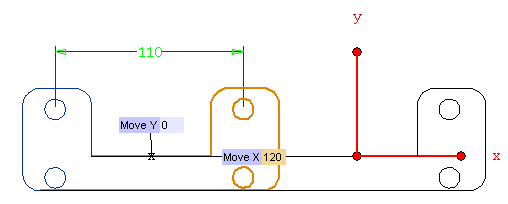
- Dragging the handles at the end points or by typing the X, Y, Z components of the translation into the Delta boxes which show up when you pick the handle.
- Click on the handle and specify the new end point
- Click on Handle Origin in the selection list to expand it, click on End point and then specify the new end point
- Click on Handle Origin in the selection list to expand it, right-click on End point, select Reset in the context menu and then specify the new end point.
To undo the transformation you can check in the preview, before actually applying it and quitting the command, click the  button.
button.
 or
or  to confirm your selections and apply the transformation.
to confirm your selections and apply the transformation.
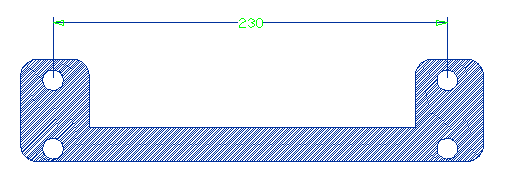
Click
 to discard your changes.
to discard your changes.